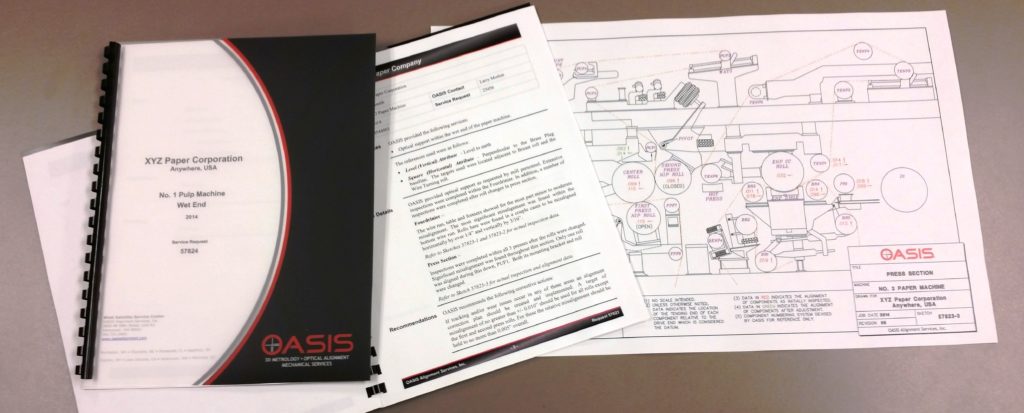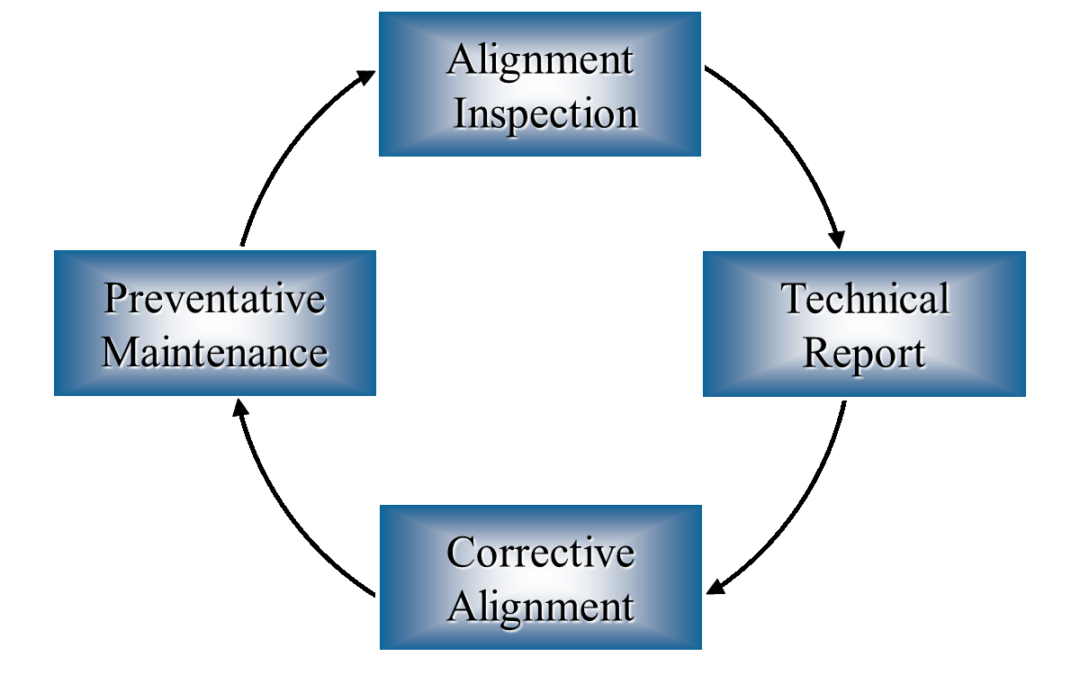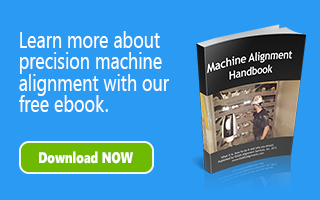In the first part of our four part series on the OASIS Alignment Cycle, we provided an overview of the importance of Alignment Inspections. In this post, we delve into Stage Two: Technical Reports. Here we discuss what should be included in your technical report and provide you with the benefits of maintaining accurate machine alignment records. In future posts we will cover the last two stages of the cycle – Corrective Alignment and Preventative Maintenance.
For any manufacturer, your machines and process lines are the lifeblood of your business. Keeping your equipment running at optimum operating efficiency minimizes the risk of unscheduled downtime, high scrap rates, and poor product quality. Maintaining comprehensive historical records of alignment inspection data, alignment adjustments, and maintenance procedures is critical to the upkeep of the machine as well maintaining its longevity.
The Components of a Technical Report
Although manufacturing processes and machinery may differ, the components of a technical report or process line should include:
-
Project Outline
- The project outline should contain all information related to why the work was necessary and what was accomplished
-
Project Results
- Included in the project results, should be detailed information on the findings and/or alignment corrections that were performed
-
Comprehensive Recommendations
- Recommendations should incorporate actions to be undertaken for improving machine alignment, maintaining machine alignment, and integrating results in a preventive maintenance program
-
Project Related Drawings/Images
- CAD drawings and/or metrology software generated images that provide concise, easy-to-follow, and comprehensive depictions of the inspection data and results

The Benefits of Maintaining Accurate Records
Technical reports are an often overlooked and underutilized tool. If you are not currently keeping or referring to the historical alignment/maintenance records for your machines, it is HIGHLY suggested that you begin doing so. Here we list just a few of the benefits of keeping up to date and accurate alignment and maintenance records.
Prevent expensive repair
The misalignment of your machine components is inevitable due to time and wear and tear. Routine alignment inspections allow for the repair of minor issues before they become large, costly problems. Documenting the inspection data and any adjustments made, is an extremely useful reference for future inspections or if issues develop.
Create preventive maintenance programs based on data
There are typically two types of maintenance strategies in the manufacturing world – reactive maintenance and preventive maintenance. Reactive maintenance will often cost you in the long run. By using historical data and provided recommendations as part of a preventive maintenance strategy, equipment alignment and maintenance tasks can be performed as part of a scheduled routine. This helps to avoid unexpected failures that can result in unscheduled and extended downtimes, as well as expensive emergency component replacements.
Alignment issues related to component upgrades, changes, and repairs are minimized or eliminated
As we mentioned in our overview of Stage One of the OASIS Alignment Cycle, it is highly recommended that a full alignment survey to document the machine centerline be performed when installing a new piece of equipment or process line. Using this data as a reference when changing rolls or upgrading components, allows for minimal alignment issues during start-up.
In an upcoming post, we will discuss Stage Three of the OASIS Alignment Cycle: Corrective Alignment. In the meantime, if you would like additional information on the OASIS Alignment Cycle or would like a site visit by an OASIS representative, please contact us. Also, be sure to subscribe to our blog for regular updates on precision alignment methods and technologies, case studies, and more.

